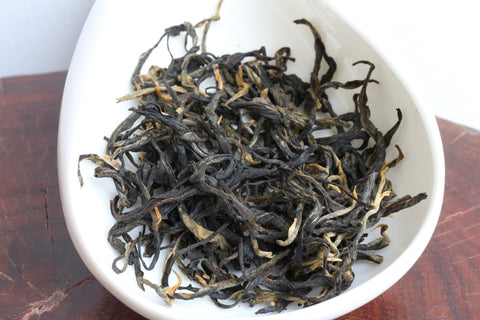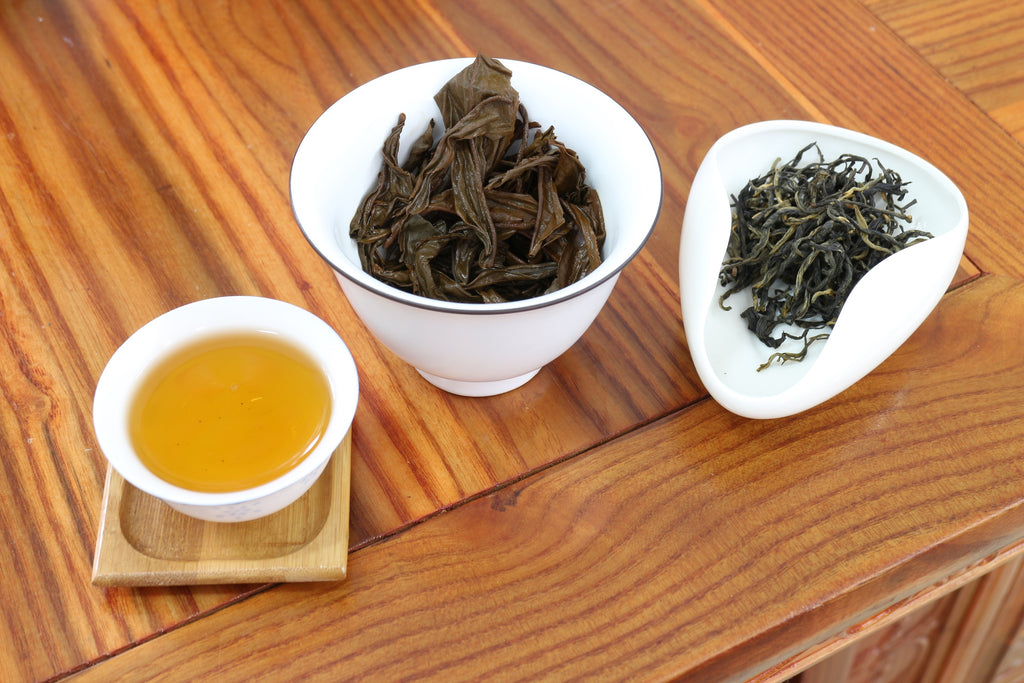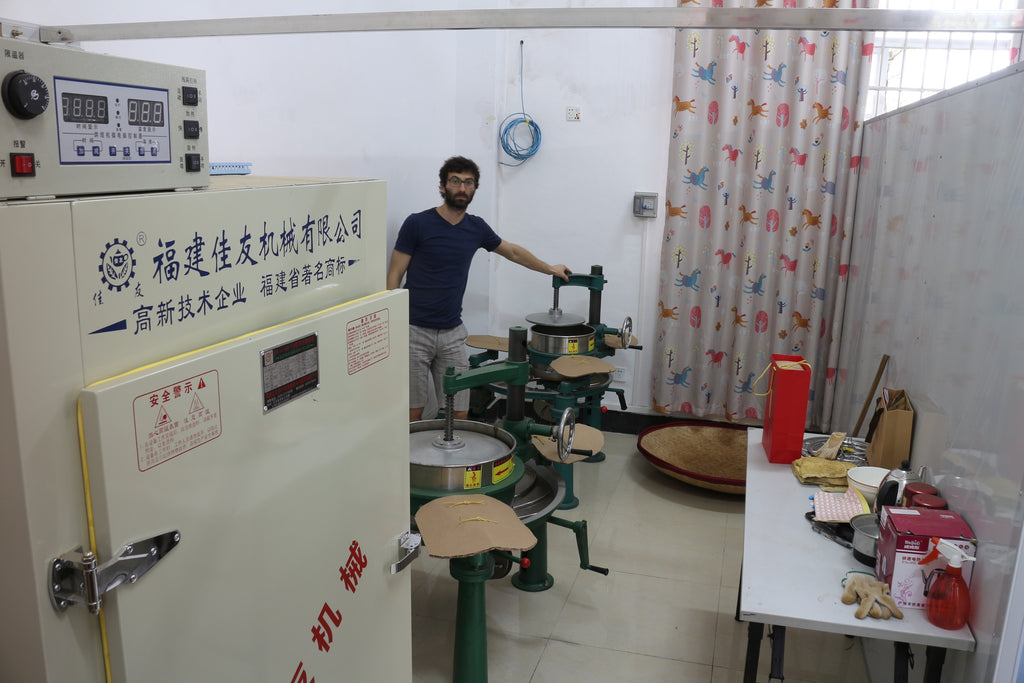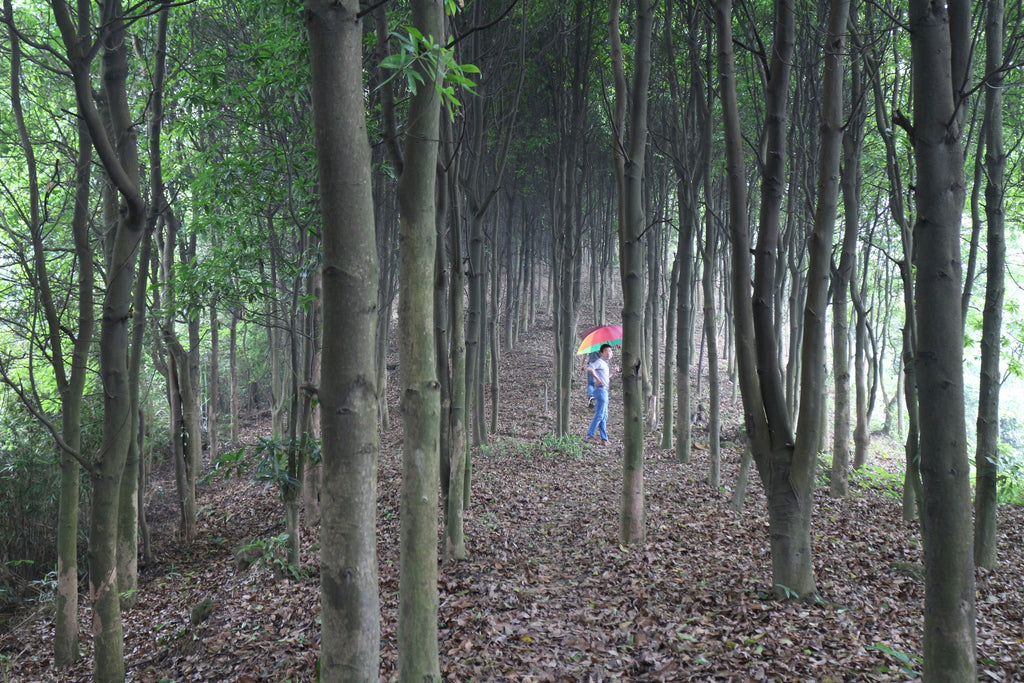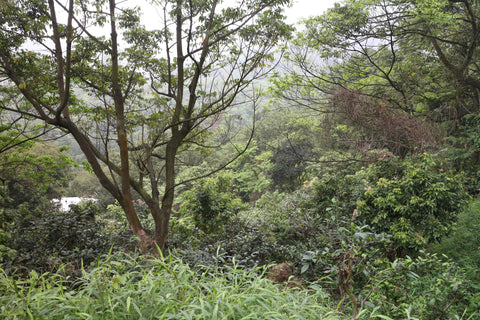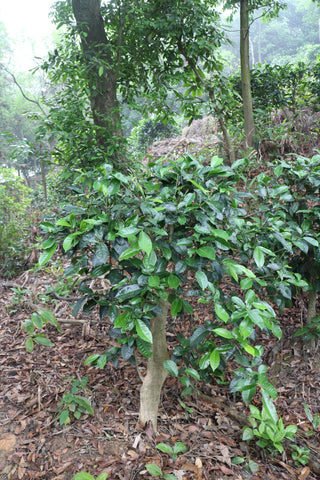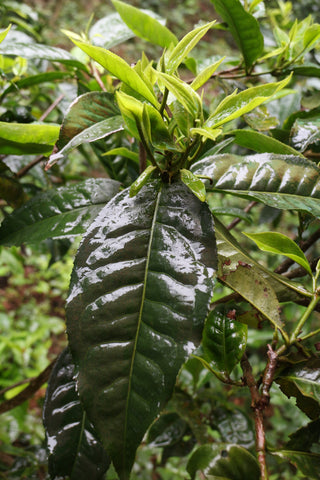The Black Forest Tea
Guangzhou, 26 April 2018
"Not all ills come to harm", they say in Italy. (cf. "every cloud has a silver lining")
The visit to to Yingde has come to a close, so I have one more day to spend in Guangzhou. At the last minute, I make use of it by organising a day with Arthur. I wake up early, traverse the whole city (and hour and a half in the metro), and am in his studio drinking tea while it's still early morning. Each year, a friend of a friend produces, for mere personal consumption, Dancong from the trees of Arthur's garden. He strongly recommended his black tea.
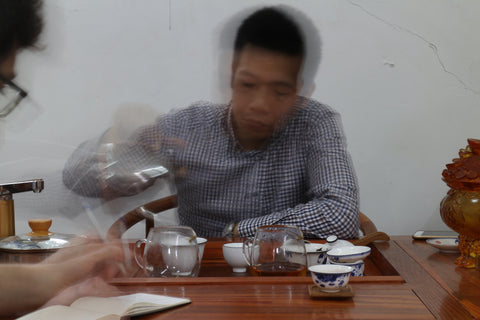
Arthur prepares me some of his black tea. Large, opaque leaves; ochre yellow infusion, very clear.
His studio also contains a room for processing tea. A single oven and undersized machine for rolling leaves; they seem like children's toys compared to those I am used to seeing. With them, Arthur produces a tea in small batches, but of a high quality.
The dry leaves emanate a delicate and wild aroma, neither floral, nor fruity. I would call it a little mellow, fresh, with a humid note that reminds me of tree bark.
It is a tea from large-leafed plants (da ye variety, Camellia sinensis var. assamica). Arthur is affable, a little insecure, and very courteous; he is particularly nice to me. In his somewhat faltering English he explains that they are forty-year-old plants, brought from Yunnan in the seventies.
After tasting a black tea, created from plants usually used for Dancong, we get in the car to go visit the garden of plants from Yunnan.

Walking through the forest to Arthur's garden of forty-year-old plants, brought from Yunnan in the seventies. Along the path, we see several Litchi trees and, just before reaching our destination, a surreal grove of bamboo.
Along the way, Arthur tells me about his passion for tea and how he became specialised in processing black tea. We leave the car in a mountain village northeast of Guangzhou. There, the road ends; we continue our way on foot through the woods and, after some twenty minutes, here are the tea trees! They are in the middle of a forest and are left to grow naturally, without any maintenance. The only human intervention, aside from the harvest, is a biennial pruning, to control the height of the bushes, which would otherwise become real trees. The trunks, as thick as legs, reveal the age of the plants to be several decades. The leaves, even larger than my hand, and the fleshy buds reveal their origin: only plants from Yunnan of the Assamica variety, have leaves of these dimensions.

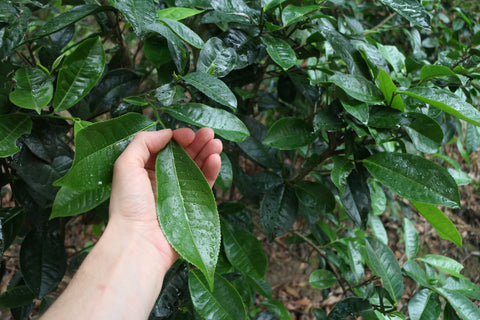
A glimpse of the tea plants, scarcely recognisable among the other plants of the forest.
Plants with a large trunk and giant leaves.
After a lunch in the mountains, we return to the city and finally manage to also talk about prices. The black Dancong is rather expensive; I would be tempted to buy it, given the rarity and quality, but, in any case, he has very little in stock. The black forest tea, on the other hand, is surprisingly cheap; I would have bought it without hesitation at twice the price! I purchase his whole stock and send it immediately to Europe, together with 5 kg of Tieguanyin that I brought from Anxi.
Written by Gabriele






